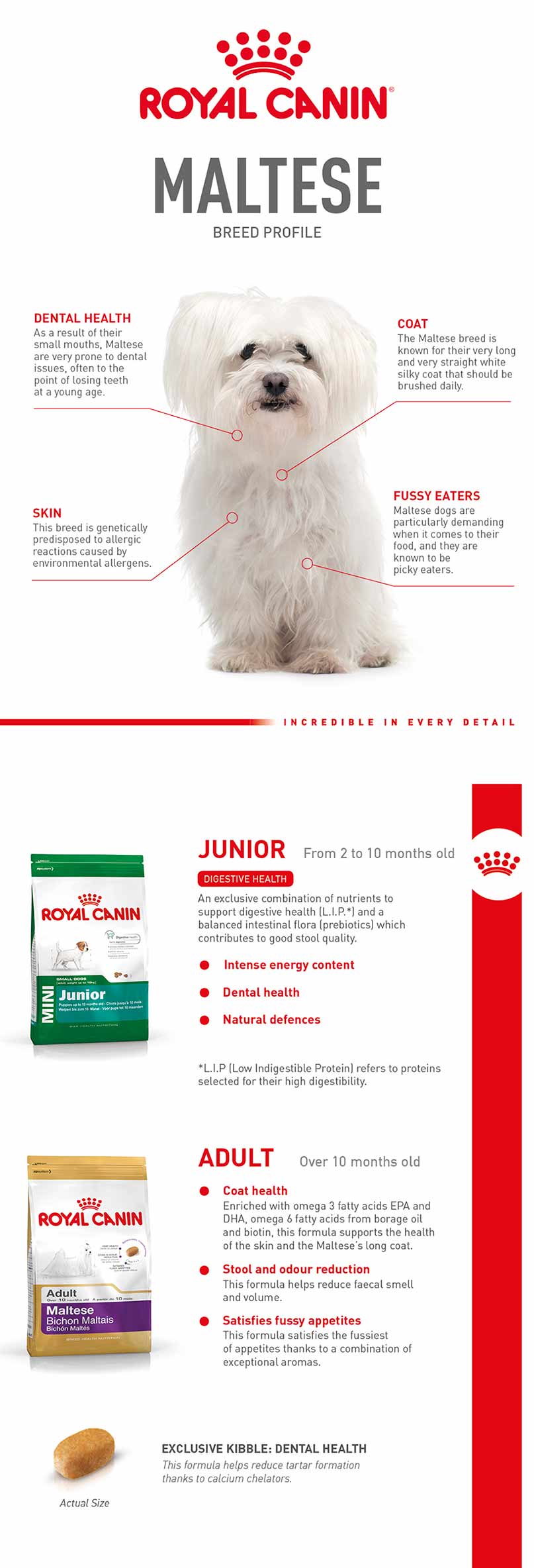Did you know that the number of times a Maltese dog eats in a day can greatly impact their overall health and well-being? These small and adorable pups have specific dietary needs that should be met through a balanced feeding schedule. So, how many times do Maltese eat a day?
Maltese dogs generally eat two to three times a day. This frequency allows for proper digestion and nutrient absorption, preventing common issues like bloating or obesity. It’s important to note that the amount and frequency of feeding may vary based on factors such as age, activity level, and health conditions. By sticking to a consistent meal plan and providing high-quality dog food, you can help ensure your Maltese maintains a healthy weight and receives the necessary nutrients for a happy and thriving life.
Feeding your Maltese the right amount of times each day is crucial for their overall health and well-being. While it may vary depending on their age, most Maltese dogs benefit from being fed twice a day. Providing a balanced meal in the morning and evening helps regulate their metabolism and prevents overeating. Remember to consult with your veterinarian to determine the best feeding schedule for your Maltese and ensure they receive the appropriate nutrition they need.

How Many Times Do Maltese Eat a Day? The Optimal Feeding Schedule for Your Furry Friend
Maltese dogs are known for their small size, playful personalities, and luscious coats. As a Maltese owner, it’s important to provide your furry friend with proper nutrition to keep them healthy and happy. One question that often arises is how many times a day should a Maltese eat? In this article, we will explore the optimal feeding schedule for Maltese dogs to ensure they receive the nutrition they need.
1. Understanding the Nutritional Needs of Maltese Dogs
Before determining the number of times your Maltese should eat, it’s crucial to understand their nutritional needs. Like all dogs, Maltese require a balanced diet that includes proteins, carbohydrates, fats, vitamins, and minerals. However, due to their small size and high energy levels, they have different dietary requirements compared to larger breeds.
A general guideline for Maltese dogs is to consume around 25-30 calories per pound of body weight per day. Taking into account their small size, this means that a Maltese weighing 5-7 pounds should consume approximately 125-210 calories daily. This calorie intake can be divided into multiple meals throughout the day to ensure your Maltese receives the right amount of nutrition without overeating or feeling hungry.
It’s important to note that individual Maltese dogs may have specific dietary needs based on their age, activity level, and overall health. Consulting with a veterinarian is always recommended to create a personalized feeding plan for your furry friend.
2. The Ideal Feeding Schedule for Maltese Dogs
When it comes to the frequency of meals, Maltese dogs tend to do well with a consistent routine. Most experts recommend feeding adult Maltese dogs two to three meals per day. Dividing their daily calorie intake into multiple meals can help prevent overeating, reduce the risk of digestive issues, and maintain stable energy levels throughout the day.
If you choose to feed your Maltese twice a day, dividing their total daily calorie intake into two equal meals is a good approach. For example, if your Maltese needs 150 calories per day, you can feed them two meals of 75 calories each. This allows for a balanced distribution of calories and ensures your Maltese stays satisfied in between meals.
Alternatively, some Maltese owners prefer feeding their dogs three smaller meals instead of two larger ones. Each meal can then be divided into approximately one-third of their daily calorie requirement. This approach may be more suitable for Maltese dogs with higher energy levels or those prone to hypoglycemia (low blood sugar).
3. Tips for Feeding Your Maltese
While establishing a feeding schedule is important, there are a few additional tips to keep in mind when it comes to feeding your Maltese:
- Use a high-quality, species-specific dog food that meets the nutritional requirements for small-breed dogs. Look for a formula that contains real meat as the first ingredient, and avoid fillers and artificial additives.
- Measure your Maltese’s food portions accurately to prevent overfeeding or underfeeding. Use a digital kitchen scale or a measuring cup to ensure you are providing the right amount of food based on their weight and the recommended daily calorie intake.
- Consider incorporating wet food or adding water to your Maltese’s kibble to increase moisture content and improve digestion. Ensure that any wet food or added water does not exceed 10% of the total daily calorie intake.
- Monitor your Maltese’s weight and body condition regularly. Adjust their feeding schedule and portion sizes accordingly to maintain a healthy weight. If your Maltese starts to gain or lose weight, consult with your veterinarian for guidance.
- Avoid leaving food out all day for free-feeding. Maltese dogs have small stomachs, and overeating can lead to obesity and other health issues.
- Provide fresh water at all times and encourage your Maltese to drink regularly to stay hydrated.
4. Benefits of a Consistent Feeding Schedule
Establishing a consistent feeding schedule for your Maltese offers several benefits:
- Regularity: A consistent schedule helps regulate your Maltese’s digestion and bowel movements, making it easier to anticipate when they need to go outside for bathroom breaks.
- Prevents obesity: By controlling portion sizes and meal times, you can prevent overeating and keep your Maltese at a healthy weight.
- Improved digestion: Regular meal times and portion control can promote proper digestion and reduce the risk of digestive issues like bloating or constipation.
- Bonding opportunity: Feeding your Maltese at set times allows for a bonding experience and reinforces a routine, making them feel more secure and comfortable.
- Prevents behavioral issues: A consistent feeding schedule can help prevent food-related aggression or resource guarding behaviors.
5. Feeding Guidelines for Maltese Puppies and Senior Dogs
Puppies and senior Maltese dogs have different dietary requirements compared to adult dogs. When it comes to puppies, they generally require more frequent meals to support their rapid growth and development. Consult with your veterinarian to determine the appropriate feeding schedule and portion sizes for your Maltese puppy.
Senior Maltese dogs, on the other hand, may have reduced activity levels and slower metabolisms. They may benefit from a slightly reduced calorie intake or smaller, more frequent meals to accommodate their age-related changes. Your veterinarian can provide guidance on the best approach to feeding your senior Maltese.
6. Addressing Food Allergies or Sensitivities in Maltese Dogs
Some Maltese dogs may develop food allergies or sensitivities, which can manifest as digestive issues, skin problems, or other symptoms. If you suspect that your Maltese has a food allergy or sensitivity, it’s important to consult with your veterinarian for proper diagnosis and guidance.
Your veterinarian may recommend an elimination diet or suggest switching to a hypoallergenic dog food that excludes common allergens such as beef, chicken, wheat, or corn. They may also recommend supplements or medications to alleviate symptoms and support your Maltese’s overall health.
Additional Considerations for Feeding Your Maltese
When it comes to feeding your Maltese, it’s essential to consider their individual needs and preferences. Some Maltese dogs may require more frequent meals, while others thrive on a consistent feeding schedule. The key is to observe your furry friend’s behavior, monitor their weight, and make adjustments as needed.
Making Mealtime Enjoyable for Your Maltese
Mealtime is not only about providing nutrition; it’s also an opportunity for bonding and enjoyment. Make mealtime enjoyable for your Maltese by using puzzle toys, slow-feeders, or feeding mats to stimulate their minds and slow down their eating pace.
Conclusion
Establishing the optimal feeding schedule for your Maltese is essential for their overall health and well-being. By understanding their nutritional needs, following a consistent feeding routine, and monitoring their weight and condition, you can ensure that your Maltese remains happy and healthy for years to come.
Key Takeaways
- Maltese dogs should ideally eat two times a day to maintain their health and energy.
- Feeding your Maltese once in the morning and once in the evening is a good routine to follow.
- It’s important to establish a consistent feeding schedule for your Maltese.
- Each meal should consist of high-quality dog food that is appropriate for their age and size.
- Always consult with your veterinarian to determine the specific dietary needs of your Maltese.
Frequently Asked Questions
Welcome to our FAQ section on how many times Maltese dogs should eat per day. Here, you’ll find answers to some common questions regarding the feeding schedule for Maltese dogs. Read on to learn more!
Q: What is the recommended number of meals per day for a Maltese?
A: Generally, it is recommended to feed a Maltese dog two to three meals per day. This helps to maintain their energy levels and prevent any digestive issues. Spreading out their meals throughout the day also helps control their blood sugar levels and prevents hunger-induced behavioral problems.
However, it’s important to note that individual dogs may have different dietary needs or health conditions that require a specific feeding schedule. Consult with your veterinarian to determine the best feeding routine for your Maltese.
Q: Can I free-feed my Maltese throughout the day?
A: Free-feeding, or leaving food out all day for your Maltese to graze, is not recommended. Maltese dogs have small stomachs and can easily overeat if given constant access to food. This can lead to weight gain and potential health issues such as obesity or pancreatitis.
Establishing a regular feeding schedule helps to regulate portion sizes and ensure your Maltese is receiving balanced nutrition. Consider dividing their daily recommended amount of food into two to three meals and feeding them at consistent times.
Q: How much food should I give my Maltese per meal?
A: The amount of food you should give your Maltese per meal depends on factors such as their age, weight, activity level, and overall health. As a general guideline, a healthy adult Maltese weighing around 4-7 pounds may require 1/4 to 1/2 cup of high-quality dry dog food per meal.
Keep in mind that every dog is unique, so it’s essential to adjust their portion sizes based on their individual needs. Monitor their body condition and consult with your veterinarian to ensure they are maintaining a healthy weight.
Q: Should I give my Maltese any treats between meals?
A: Treats can be given to Maltese dogs, but it’s important to do so in moderation. Treats should not make up more than 10% of their daily caloric intake to prevent weight gain. Opt for healthy, low-calorie treats such as small pieces of fruits or vegetables.
Avoid giving them fatty or sugary treats that can lead to obesity or dental problems. Additionally, take into consideration the calorie content of the treats you’re giving. Adjust their main meal portion sizes accordingly to ensure they are still receiving a balanced diet.
Q: Should I consult with a veterinarian to determine my Maltese’s specific feeding needs?
A: Yes, it’s highly recommended to consult with a veterinarian to determine your Maltese dog’s specific feeding needs. They can provide personalized recommendations based on factors such as their age, weight, activity level, and any underlying health conditions.
A veterinarian can also guide you on choosing the right type of dog food and help you create an appropriate feeding schedule for your Maltese. Regular check-ups and communication with your vet will ensure that your Maltese maintains a healthy diet and overall well-being.

